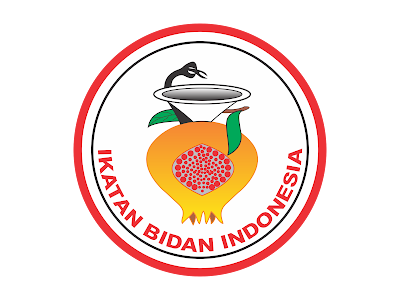Pengaruh Baby Gym Pada Perkembangan Motorik Kasar Bayi Usia 3-4 Bulan
Abstract
The growth and development of infants is a golden period which is also a critical period in a person's development in early life at the age of 0-12 months. Motor development disorder is a disorder that causes developmental delays due to many things, including abnormalities in muscle tone and lack of stimulation for the baby. In Indonesia alone, there are 5-10% of children are estimated to experience developmental delays. At the simultaneous weighing of toddlers in Demak in 2020 it was found that out of 97,129 toddlers, there were 7.71% experienced developmental delays. Data from the Guntur 1 Demak Health Center from 2021 to June states that the number of babies aged 0-12 months is 523 babies. The lack of knowledge of the baby's parents about growth and development and the little stimulation given to the baby both from caregivers and from the baby's parents makes most babies experience developmental delays. One of the efforts to reduce the number of developmental disorders is by providing Baby Gym stimulation. In infants, Baby Gym is a form of exercise to help stimulate the growth and development of the baby's nervous and motoric systems optimally. This study aimed to determine the effect of the baby gym on gross motor development in infants aged 3-4 months at the Guntur I Health Center in Demak. This study used a quasi-experimental approach with a one-group pre-test and post-test research design. The sampling technique here is based on the purposive sampling method, with a population of 28 babies and a total sample of 16 babies. Based on bivariate analysis using the Wilxocon correlation test, it was obtained a p-value of 0.000 <0.05, it can be concluded 'that there is an effect of differences in gross motor development of infants aged 3-4 months before and after being given a baby gym at the Guntur I Health Center in Demak". The Effect of Baby Gym on Gross Motor Development in Infants Aged 3-4 Months at the Guntur I Health Center in Demak.
References
Dewi, V. N. L. (2010). Asuhan neonatus bayi dan anak balita. Jakarta: Salemba Medika, 30.
Martira Maddeppungeng. (2018). Buku Panduan Kuesioner Pra Skrining Perkembangan (KPSP)Penyusun FAKULTAS KEDOKTERAN. Dr. Dr. Martira Maddeppungeng Sp.A(K), 1–25.
https://med.unhas.ac.id/kedokteran/wp-content/uploads/2018/03/KUESIONER-PRA-SKRINING-PERKEMBANGAN-KPSP.pdf
Elvira, M., & Azizah, S. (2017). Pengaruh Pemberian Pijat Bayi Terhadap Kenaikan Berat Badan Bayi Umur 0-6 Bulan Di BPS Bunda Bukittinggi. Jurnal Pembangunan Nagari, 2(1), 85. https://doi.org/10.30559/jpn.v2i1.16
Gunarsa, S. D. (1982). Dasar dan teori perkembangan anak. BPK Gunung Mulia.
Hasanah, U. (2016). Pengembangan Kemampuan Fisik Motorik Melalui Permainan Tradisional Bagi Anak Usia Dini. Jurnal Pendidikan Anak, 5(1), 717–733. https://doi.org/10.21831/jpa.v5i1.12368
Hazmi, F. (2017). Perbedaan pengaruh senam bayi dengan pijat bayi dalam meningkatkan motorik kasar pada anak usia 3-12 bulan di posyandu modinan yogyakarta. Universitas Aisyiyah Yogyakarta, 1–10.
Herlina, H., & Fauzi, A. N. (2019). Pengaruh Brain Gym Terhadap Prestasi Belajar Anak Kelas 4 Di Madrasah Ibtidaiyah (Mi) Al-Madani Komplek Inkopad Rw 06 Tajurhalang Kabupaten Bogor Tahun 2014. Jurnal Keperawatan Widya Gantari Indonesia, 2(1), 71–80. https://doi.org/10.52020/jkwgi.v2i1.850
Kemenkes, R. I. (2016). Stimulasi, deteksi dan intervensi dini tumbuh kembang anak di tingkat pelayanan kesehatan dasar. Dalam: Kementerian Kesehatan RI, Ed. Pedoman Pelaksanaan Sdidtk. Jakarta: Bhakti Husada, 31–59.
Marmi, K. R. (2014). Asuhan neonatus, bayi, balita, dan anak prasekolah.
Nursalam, S. (2013). Metodologi penelitian ilmu keperawatan pendekatan praktis. Jakarta: Salemba Medika.
WHO. (2016). World health statistics 2016: monitoring health for the SDGs sustainable development goals. World Health Organization. https://apps.who.int/iris/handle/10665/206498
Sari, P. eka K. (2014). Efektifitas Pijat Bayi Terhadap Pertumbuhan. Pijat Bayi.
Soekidjo, N. (2010). Metodologi penelitian kesehatan. Jakarta: Rineka Cipta, 50.
Suryanti, P., & Indrayasa, K. (2021). Meningkatkan Kemampuan Motorik Anak Usia Dini Melalui Latihan Yoga Asanas. Jurnal Agama Dan Budaya, 5(1), 31–42. https://jurnal.stahnmpukuturan.ac.id/index.php/Purwadita/article/view/1426
Wasiatiningrum, D. (2018). Pengaruh Pelatihan Baby Gym Terhadap Kemampuan Ibu Untuk Melakukan Baby Gym (Di Wilayah Kerja Ponkesdes Grogol, Desa Grogol, Kecamatan Diwek, Kabupaten Jombang). http://repo.stikesicme-jbg.ac.id/1326/









